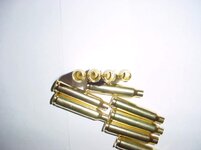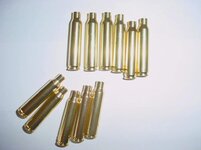Bronze Supporter
- Messages
- 2,710
- Reactions
- 5,765
I have loaded on 223 on a Dillon 550 for 15 years. You trim after sizing. All cases will stretch a little when sized. Too much lube will cause dimples in the case near the shoulder. I load for competition and plinking. Trimmers. Yes the Giraud is the best butt the cost is $$$. The RCBS trimmer you can purchase a different cutting head to chamfer/debur as you trim saves two steps. I have used a Lyman trimmer for thousands of rounds and it works well. Depending on the type of 223 rifle you are shooting target or plinker? Bullets- 55 fmj Winchesters are the cheapest and probably the least accurate bullet to use. Which makes them OK for plinking but not for small groups from a bench. IMI and Hornaday 55's are accurate. Hornady A-max and Sierra Match Kings are some of the the most accurate bullets. Winchester brass is more accurate than Lake City. Federal brass is too soft. Lake city is perfect for plinking. Varget is a good powder for the heavier bullets (77 & 80) but does not meter that consistently. WW-748, AA-2230, H-335 will meter well in the 550 and work in your 223. I have found a load that works in 1/9 , 1/8 or 1/7 twist rifles. Winchester brass- 26 grains of WW-748 and the 52 Sierra Match King. Sub MOA groups. I have shot a lot of 223's and this information is from my personal experiences. I have tested loads with only changing brands of brass. These powders I recommend I have gone through many pounds of each. There are many other powders and bullets I am sure that work well but I do not have personnel experience with.














